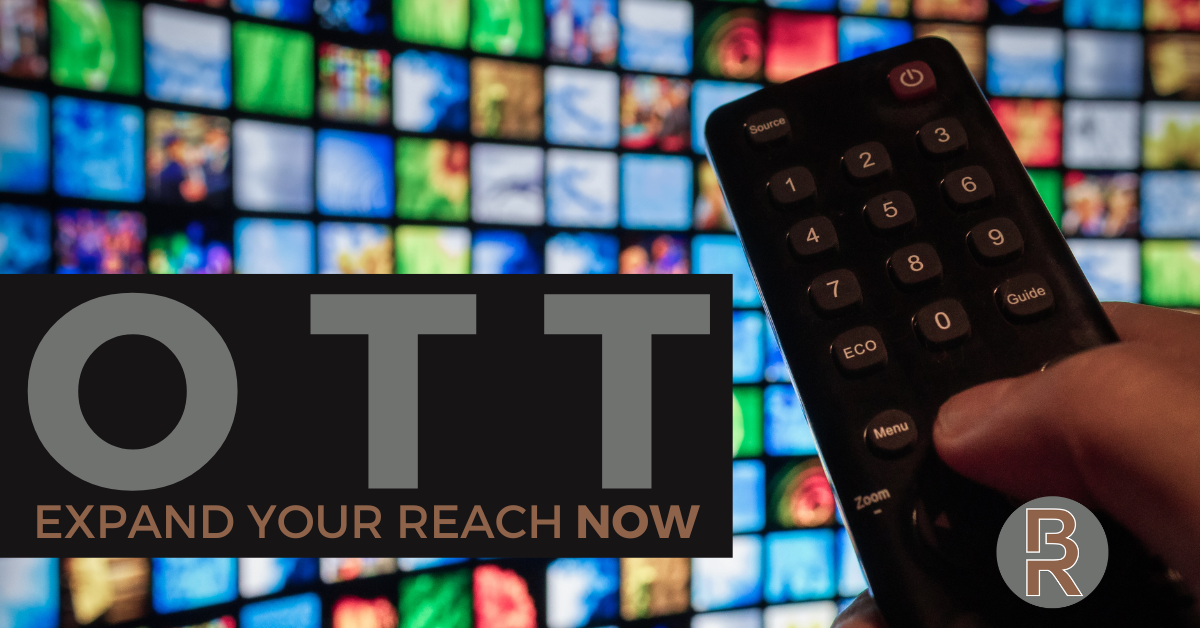
OTT, which is short for Over-The-Top, is a rapidly growing streaming television experience via the internet that has seen consistent growth over the years. OTT viewing is changing the way in which we consume television and, more importantly, how we purchase television advertising.
You’ve heard the saying “a bird in the hand is worth two in the bush.” This could be true for you if you add OTT to your traditional linear television campaign. There is a recent trend of consumers cutting the cord, foregoing cable bundles, and opting for a more personalized viewing experience with streaming devices. While many advertisers are slow to adjust to these trends, it opens the door for competitors to capitalize on the opportunity to increase brand awareness and gain a piece of market share.
The difference between OTT and Linear TV
Linear television is a traditional viewing experience, where the consumer tunes to a specific channel at a designated time to watch a program. Most linear TV is accessed through a subscription to cable or satellite services. Targeting your audience on traditional TV is based on ratings and time of day – so the advertiser pays based on viewer ratings, which sometimes are unclear or “projected” by the ratings system. It is dependent on viewers tuning in to a specific station to watch the scheduled content. The viewer’s location can also be unclear, so the reach may be too broad for the goals of your campaign.
OTT, which is short for Over-The-Top, is a rapidly growing viewer experience via the internet. Common OTT devices are Roku, Hulu, FireStick, YouTubeTV, and Apple TV. Viewers of OTT are usually watching content when it’s convenient for them – not at a “scheduled” time. OTT platforms allow advertisers to engage with their audience when and where they are watching. Targeting your audience on OTT can be a lot more specific. Because the content is being viewed digitally, the targeting can be based on location, needs, interests, demographics, and even past experiences, allowing for sequential messaging. Advertisers pay based on the number of impressions or views (not ratings and projections), and performance can be tracked in real time – allowing for optimization if needed. Ads can also include a call-to action so the consumer can interact with the ad immediately from their viewing device.
Is OTT right for you?
If you are utilizing broadcast television advertising and want to increase your brand awareness, reach a more targeted audience, and maintain growth, then OTT is right for you! Changing campaign strategies to coincide with consumer trends is key when growing your business. OTT allows you to reach consumers wherever they are! According to Effectv, adding OTT to traditional TV campaigns can boost brand awareness by 86%. Their research shows that viewers were 3x more likely to interact with the ad when seen on TV and OTT, brand recall more than doubled, and purchase intent increased by an average of 15%. Consumers are increasingly spending more time using OTT services as a benefit – allowing them to watch their favorite content whenever and wherever they want.
Publisher vs. Platform
There are two main sources for accessing OTT advertising – publishers and platforms. Publishers distribute their programming through apps on different devices and platforms. Some of the largest publishers include Hulu, ABC, FOX, CBS, NBC, YouTube, Effectv and Xfinity. Platforms are operating systems or devices that sell advertising to their publisher partners. Examples of platforms are smart/connected TV’s (Sony and Samsung), video game consoles (Xbox, Playstation), and streaming boxes (Chromecast, Roku, Firestick, Apple TV). Combining your target audience with campaign goals can help you decide which option is best for you.
In Conclusion
If you are currently utilizing traditional television and not including an OTT platform simultaneously, you may be missing out on a huge audience. OTT audiences are more targeted and add a highly engaged consumer to your advertising reach. As most consumers watching traditional television may change the channel during advertisements, an OTT user is watching content that they chose, so they are invested and more likely to interact with your ad – especially if they’ve seen it on traditional TV and create a connection through brand recall.
Achieve your marketing goals and increase brand awareness by combining the targeting and measurement of OTT with the reach and impact of traditional TV.
If you want to stay on top of the fast-changing audience trends and the capabilities of new marketing tools, contact us today about your campaign goals and OTT. Call our offices directly at 713-309-6380, or leave your comments below.
